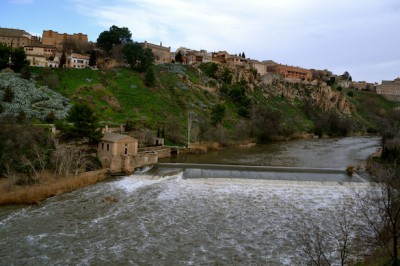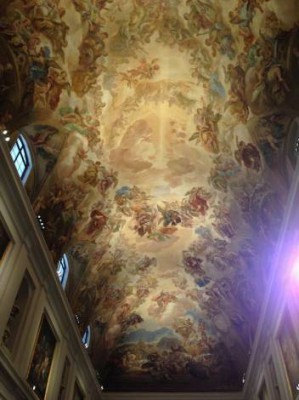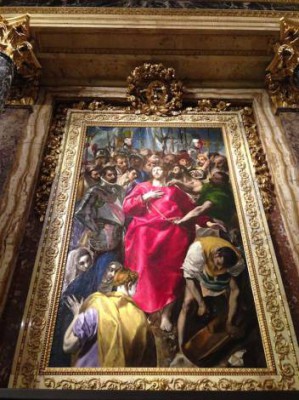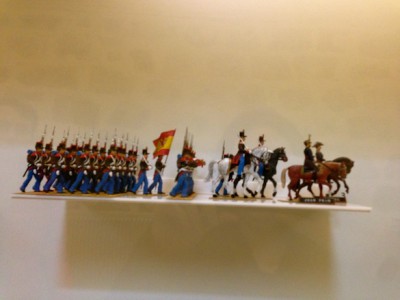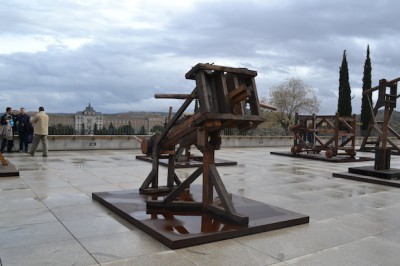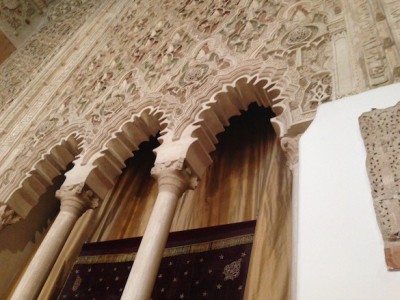TOLEDO, SPAIN. Toledo is an ideal day trip from Madrid; it takes about one hour by bus or car and 30 minutes by train from the capital, Madrid. Many study abroad programs in Madrid will include a day trip to Toledo, as did my university.
Toledo is known as the “City of the Three Cultures”, because if the co-existence of Christians, Muslims and Jews and it was the first major city in the Christian Reconquista. We visited many beautiful religious sites such as the Mosque of Cristo de la Luz, The Toledo Cathedral, and the Sephardic Museum. My friend and I also got the chance to visit the Toledo Army Museum.
Our first stop in Toledo was at the Mosque of Cristo de la Cruz. It has very interesting architecture because it had Muslim domes as well as Christian art. Built in 999 AD, it is the only one of the ten once existing in Toledo that is still the same as it was in the Moorish period.

Mosque of Cristo de la Luz. Nowadays, part of the building is a church while the other half is a mosque. | Amanda Al-Sayah
We then went to see the cathedral of Toledo, a Roman Catholic cathedral which is also known as the Primal Cathedral of Saint Mary of Toledo. The architecture and art in the cathedral were absolutely breathtaking. It is one of the few High Gothic cathedrals in Spain and was built in 1226 under Ferdinand III. The picture below is of the main entrance of the building which is also known as the “Portal of Forgiveness”.
The retable is a very intricate and elaborate altarpiece that had become more rare over time. It extends above the altar and has many different themes including the Virgin with her child, a depiction of the Nativity, and the Ascension. It sits behind the large figure of the crucifixion.
The Sacristía was built in the late sixteenth century by Vergara el Mozo . The whole room is a an art gallery with paintings of the most important painters such as El Greco , Caravaggio , Titian, Goya, etc. This painting called “Disrobing of Christ” by El Greco, stands in the center of the front of the room. “Disrobing of Christ” shows Christ showing a serene expression while being disrobed in preparation for his crucifixion. The painting is effective for its vibrant use of color and the use of space elimination wherein many people are crowded around Christ that there is not much space in the background.
My friend and I were wandering around Toledo during break when we found The Spanish Army Museum. We used our International Student Identity Card (ISIC), which offers benefits such as free entry to museums. The Spanish Army Museum is the combination of several other army museums and was built in the late nineteenth century. It is one of the oldest Spanish museums and when it was made, its main goal was to support soldier training and to supplement teaching at military academies.
Our last visit of the day was at the Sephardic Museum. It contains hispano-jewish and Sephardic art and is home to many remains of the Jewish culture. The museum shows the Sephardic culture from after the expulsion of the Spanish Jews in 1492. Our tour guide explained to us that if one can prove that they are descendants of Sephardic Jews, he or she could easily be granted Spanish citizenship.
I really enjoyed my trip to the city of Toledo. It was very close to Madrid and had a beautiful small-town vibe while being a well-known city. The people were also very warm and welcoming and the sights were incredible. Toledo was a previous capital of Spain and it still remains rich with history and was probably one of the few places wherein people of many religions lived in harmony. I would definitely recommend a visit to Toledo especially if one is interested in art, architecture, and religion.

